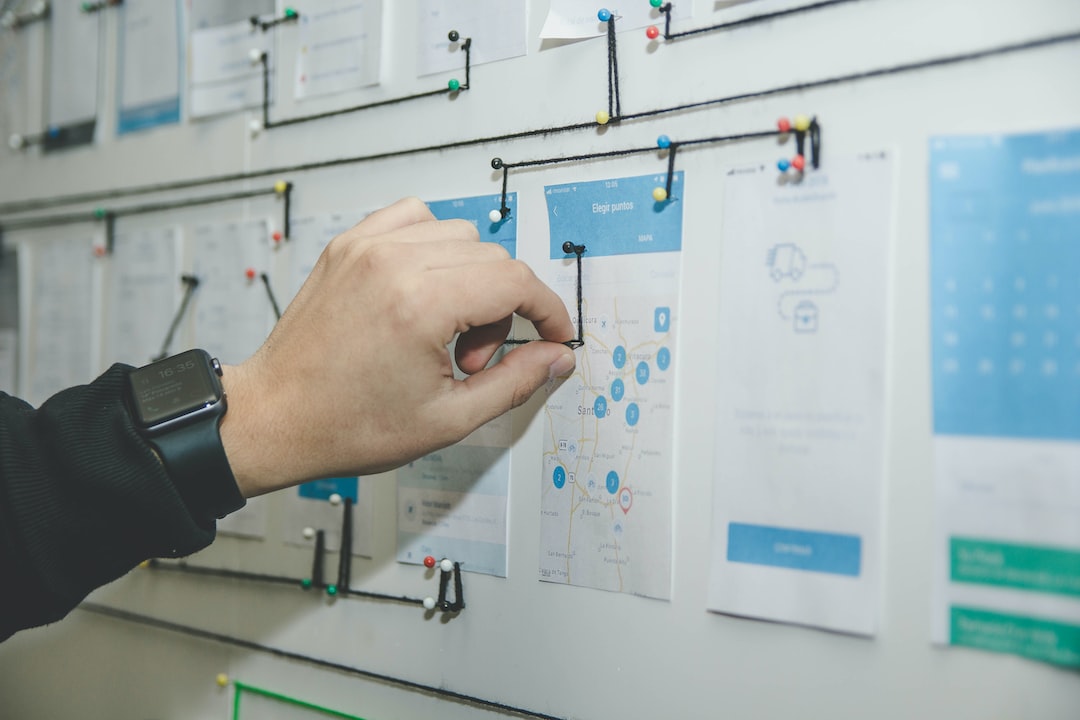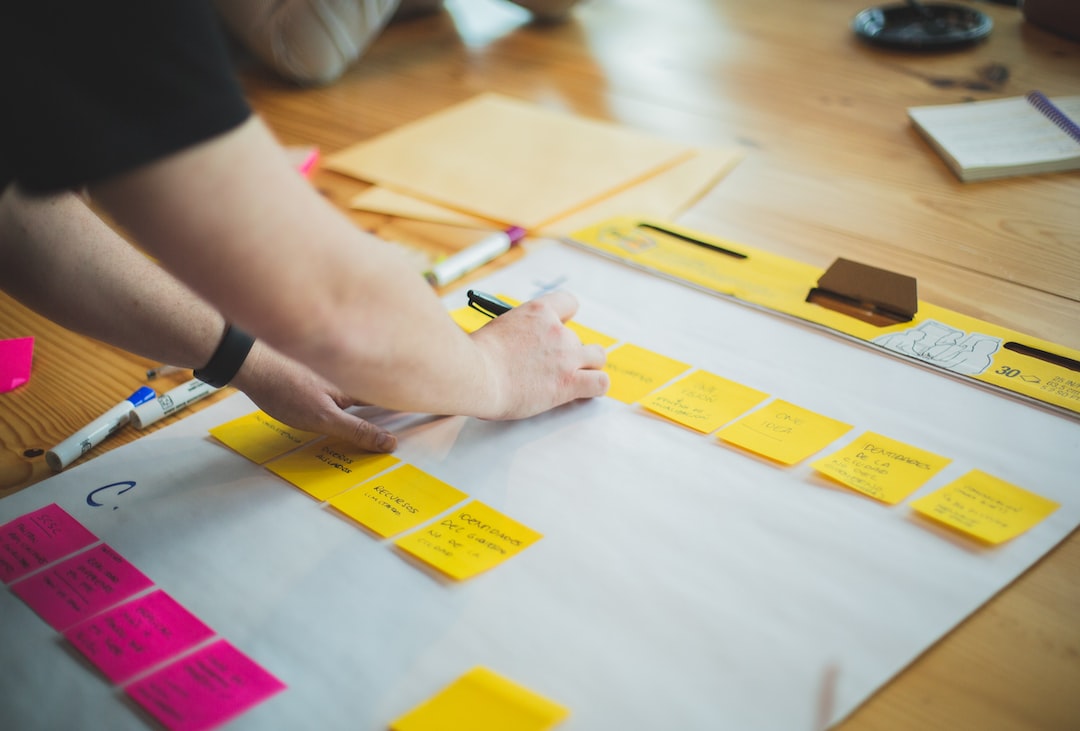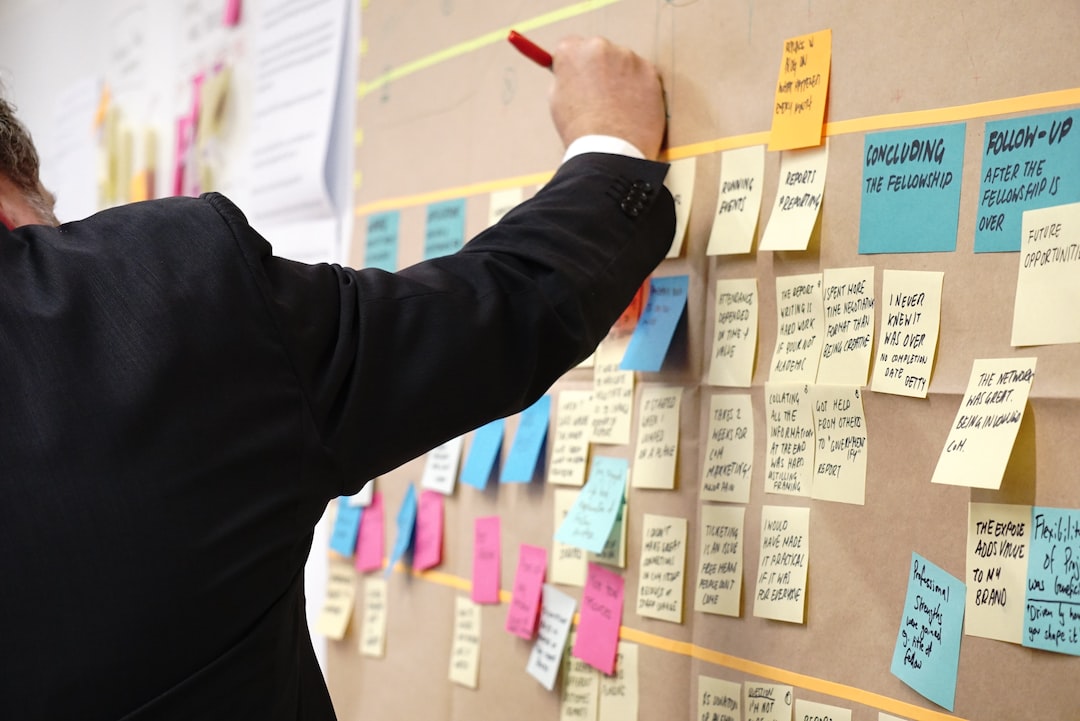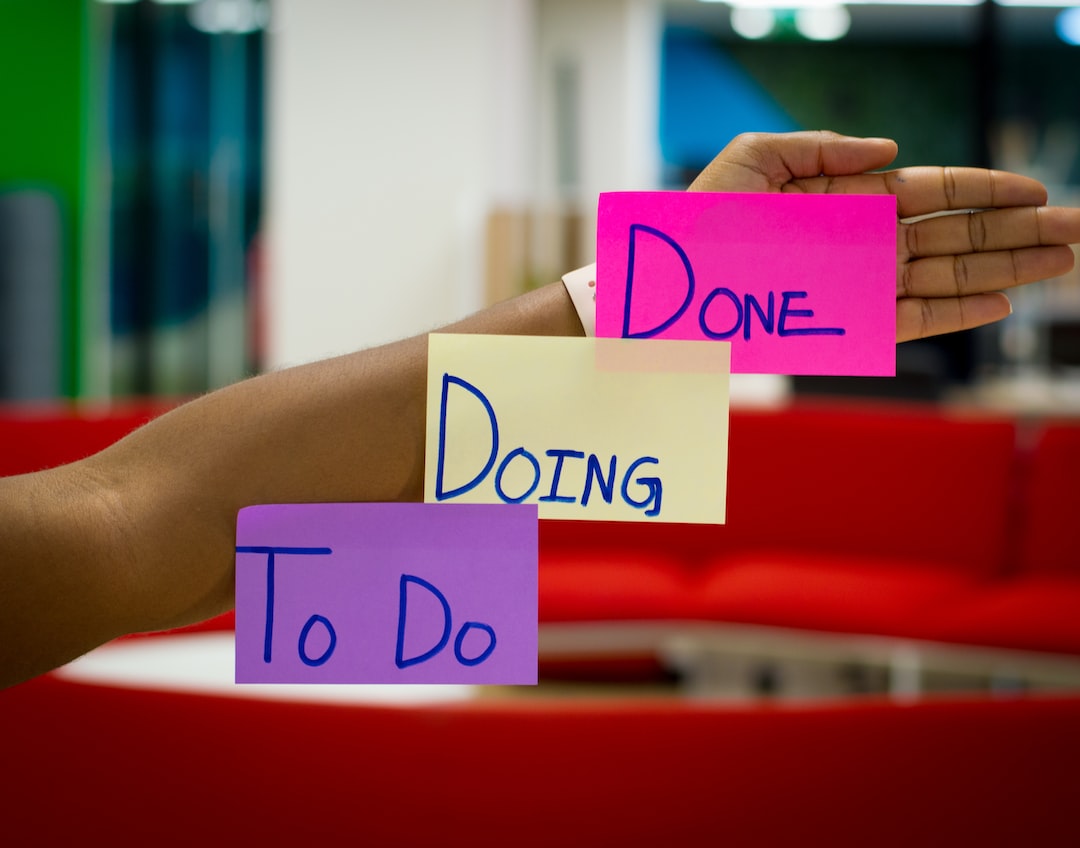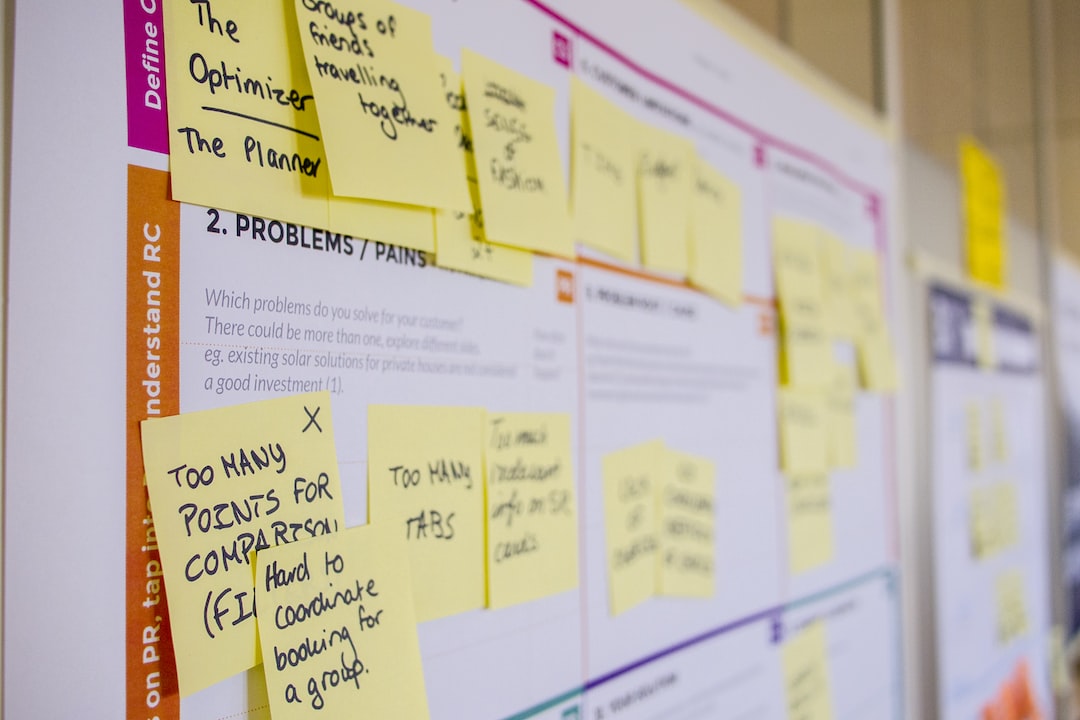The 15 Best Techniques, Practices, and Tools for Project Management
The 15 Best Techniques, Practices, and Tools for Project Management
1. Define the project’s goals and objectives
The demand for skilled project managers is on the rise. As businesses become more complex, the need for professionals who can manage these projects and ensure their successful completion becomes more evident.
Project management is a complex field, and there are a number of different techniques, practices, and tools that can be used to ensure the successful completion of a project. In this article, we will discuss the 15 best techniques, practices, and tools that every project manager should know about.
https://unsplash.com/ko/@edenconstantin0
2. Assemble the right team
In order to effectively manage a project and ensure its successful completion, it is important to assemble the right team. This team should consist of skilled professionals who possess the necessary expertise to help ensure the project’s success. It is important to ensure that all team members work together in harmony and that there is open communication between all team members.
If the project needs specific expertise that you or your team don’t possess, it is important to outsource those jobs to professionals. This will ensure that the project is done with the highest level of quality and that all milestones are met. Additionally, outsourcing jobs can help to reduce the overall cost of the project.
https://unsplash.com/@alvarordesign
3. Create a project schedule
Creating and maintaining a project schedule is essential for successful project management. A project schedule serves as a roadmap that all team members can reference in order to ensure the project remains on track. When creating a project schedule, it is important to include milestones that are easily trackable and achievable. Additionally, each milestone should have an actionable plan for its completion.
The schedule should be easy to understand and provide the necessary information to ensure the project progresses in a timely manner. It should also be updated on a regular basis in order to account for any changes that have occurred such as a delay in a milestone or a change in the scope of work. It should also include back-up plans should a major obstacle arise.
https://unsplash.com/@jasongoodman_youxventures
4. Manage risks
Another important aspect of project management is the management of risks. Risk management is the process of identifying, analyzing, and responding to any potential risks that may occur during the duration of the project. Risks may arise from uncertainties such as scope changes, schedule changes, budget changes, technological limitations, or other unforeseen events.
An effective risk management strategy requires project managers to continually monitor risks and take measures to minimize their effects. This includes creating Contingency Plans to ensure the project is able to continue in the event of any unexpected roadblocks. Additionally, it involves constantly monitoring the project and communicating any changes to the project team to ensure all team members are informed and up-to-date.
https://unsplash.com/@brandsandpeople
5. Stay on top of project milestones
One of the most important aspects of project management is staying on top of all project milestones. Milestones are important checkpoints to measure project progress and can indicate potential bottlenecks early.
Project milestones are set at the beginning of the project and are used to track progress of each aspect of the project. For example, it could be setting a deadline for the completion of a particular project task, making sure the project is in sync with the customer’s timeline, or making sure the team is on track to meet their budget and resources.
An effective project milestone tracking system includes assigning responsibility to each team member and ensuring that regular project check-ins are made. Additionally, project managers should have the ability to monitor and adjust project milestones as needed and discuss any changes with the team. Regular communication and milestone tracking ensures that the project is on track and that all goals are reached in an efficient and timely manner.
https://unsplash.com/@joszczepanska
6. Communicate with all stakeholders
One of the most important responsibilities of a project manager is communicating effectively with all stakeholders. Communicating with all stakeholders and keeping them informed of all changes in the project helps ensure that everyone is on the same page.
Project managers can communicate with stakeholders in a variety of ways. This could include meeting with stakeholders in person, communicating over the phone, using video conferencing, or sending out newsletters or emails. Whichever method works best for the project, project managers should ensure that all stakeholders are informed and understand their roles in regards to the project.
Communication should not only be about keeping stakeholders informed, but should also allow for open dialogue to ensure that any issues or concerns can be discussed openly. Providing a platform for open, two-way communication helps to ensure all decisions are made with input from all stakeholders. In addition, project managers must ensure that all conversations are documented and discussed in detail at future meetings.
https://unsplash.com/@octadan
7. Manage changes to the project
Change is an inevitable part of the project management process. Projects are dynamic and ever-evolving, so it is essential to proactively anticipate and manage change throughout the project cycle.
Project managers need to develop an effective change management process to ensure that changes do not derail the project. The process should be based on an evaluation system which considers the impact, urgency and complexity of each request. The evaluation system should help identify which changes should be implemented, when and how they should be implemented, and any potential risks they may entail.
Project managers should also ensure that the project team is aware of the process for managing change and that there is a common understanding of all changes. This should include the actions, who is responsible and when the change needs to be implemented. Clear communication and regular updates to all stakeholders will also help to ensure that changes are implemented efficiently and with minimal disruption to the project.
https://unsplash.com/@louisemink
8. Conduct post-mortem analysis
Just as important as managing changes throughout the course of a project is conducting post-mortem analysis. This should take place after the project is completed so that the team and stakeholders can evaluate how it went and what could be improved upon in the future. The post-mortem should include a comprehensive and objective review of the project’s goals, outcomes and results.
The review should include gathering input from the project team, stakeholders and clients. The data gathered through this process should then be analyzed and shared with project team members to identify areas of improvement and areas of success. The goal of this analysis is to ensure that the same issues do not occur in future projects.
Conducting a post-mortem analysis is a great way to ensure that the team has reached the expected outcome, that the project requirements were met, and that the stakeholders are satisfied with the results. Regular post-mortem analyses can help inform processes for future projects and ensure that each project runs more efficiently and effectively.
https://unsplash.com/ko/@edenconstantin0
9. Best practices for distributed teams
In an increasingly distributed and global economy, distributed teams are becoming the norm. While distributed teams come with many advantages, such as providing access to a larger more diverse pool of talent, the manner in which teams are managed and maintained remains important for success.
The best practices for working with distributed teams include:
• Utilizing Cross-collaboration: Cross-collaboration allows each team member to contribute their unique skillset and perspective. While this can be more difficult to implement remotely, communication strategies, such as regular video and audio meetings and utilizing communication platforms, can ensure that team members are able to easily share their work and ideas.
• Applying Agile Methodology: Agile project management helps distributed teams stay on track by emphasizing flexibility and adaptability to changing conditions. This methodology can be especially helpful when introducing new team members, or when moving laterally within the project.
• Stay Connected: Many distributed teams opt to keep in touch over social media, or to create a dedicated platform for interactions. Staying in touch with the team through regular methods of communication helps maintain collaboration and understanding.
By maintaining open communication and utilizing the right tools, distributed teams can succeed in any project.
https://unsplash.com/@markuswinkler
10. Best practices for agile teams
Agile teams offer a flexible and adaptable approach to project management. This makes them the perfect choice for distributed teams who need to work together remotely. Here are 13 of the best practices for agile teams:
• Utilize Cross-Functional Teams: Cross-functional teams that consist of members from different departments or business functions can provide diverse perspectives and allow for more effective collaboration.
• Establish a Collaborative Mindset: Establishing a collaborative mindset within the team by focusing on shared goals and levels of communication. This allows the team to share ideas and work together more effectively.
• Adopt Visual Project Management: Utilizing visual project management tools like Kanban boards, Gantt charts, etc. can make it easier to keep track of tasks and project progress.
• Encourage Continuous Improvement: Encouraging team members to continuously review their processes and look for ways to improve.
• Follow Standard Releasing Processes: Following a standard releasing process for new features and product releases helps ensure that products stay up-to-date and perform reliably.
• Utilize Scrum Practices: Utilizing scrum practices such as sprints and daily scrums can help distributed teams communicate effectively.
• Prioritize Automation: Prioritizing automation whenever possible can help save time, money, and effort. Automation can also be used to help alleviate mundane tasks that take away from working on the project.
https://unsplash.com/@epicantus
11. Best practices for waterfall teams
Waterfall teams often use a more traditional approach to project management. Here are 15 of the best practices for waterfall teams:
• Make Sure Everyone Understands the Plan: Make sure everyone understands the plan upfront. This will allow the team to move more quickly and eliminate the need for wasted time.
• Define Office Hours a Year in Advance: Defining office hours in advance can help prevent misunderstandings and keep teams on track.
• Utilize Known Schedules: Utilize established schedules to ensure that tasks are completed on time and on budget.
• Establish Clear Goals and Deadlines: Establishing clear goals and deadlines for projects can help the team stay on track and prevent misunderstandings about the project's final deliverable.
• Schedule Regular Team Meetings: Scheduling regular team meetings is important for staying on track and meeting deadlines.
• Prioritize Communication: Prioritizing communication between team members and with stakeholders helps ensure that everyone is on the same page.
• Utilize Project Management Software: Utilizing project management software and tools can help keep track of progress and enable collaboration between team members.
• Use Risk Management Strategies: Mapping out and mitigating risks can help prevent costly mistakes and keep the team on track.
• Monitor Unforeseen Circumstances: Being aware of, and where applicable, preparing for unforeseen circumstances can help keep the team on track when unexpected issues arise.
12. Tools for project management
9. Utilize Project Management Tools: Project management tools such as Asana, Teamwork, and Basecamp are great for managing projects. These tools provide project templating, task tracking, and Gantt charts to track and prioritize tasks.
10. Leverage Visual Dashboards: Visual Dashboards, such as Nvyte, provide an easy way to gain insights into projects. This type of dashboard is great for providing an overview of a project's status at-a-glance and helps to discover potential issues.
11. Use Resource Management Tools: Resource management tools such asResource Guru help to manage resources across multiple projects. This type of tool enables teams to manage resources, bookings and help scheduling in an organized way.
12. Use Collaboration Software: Collaboration software such as Yammer, Slack and HipChat provide a platform for teams to share information and documents, as well as communicate with each other.
13. Utilize Time Tracking Tools: Time tracking tools such as Harvest, Toggl and Paymo are great for protecting yourself against scope creep and managing budget overruns.
14. Leverage Task & Issue Management Tools: Task and issue management tools such as JIRA and Trello help to organize tasks and issues within a project, as well as track progress and provide visibility over the project’s progress to stakeholders.
15. Use Document Collaboration Platforms: Document collaboration platforms such
13. Techniques for project management
1. Define Clear Goals and Objectives: It is essential to have clear and concise goals and objectives before any project begins. This ensures that the team and other stakeholders involved in the project have the same understanding of what needs to be achieved.
2. Develop a Common Understanding: Every project should have a clear definition of the problem and associated expectations. This helps to ensure that everyone has a clear understanding of the ‘what’ and ‘why’ of the project.
3. Create a Detailed Plan: A detailed plan should be created with tasks that need to be accomplished and who is going to do it. This should include activities and timelines, resources, and budget required to complete the tasks.
4. Track Progress and Performance: Projects should be monitored and tracked throughout the entire process to ensure that the project is progressing as planned and the team is meeting the deadlines.
5. Establish an Early Warning System: A system should be in place to warn all stakeholders if there are any risks or issues related to the project, so that the issues can be addressed quickly and efficiently.
6. Identify and Monitor Critical Paths: A critical path is the shortest path to the completion of any particular project. Identifying and monitoring critical paths helps to ensure that the team is focused and working on the most important tasks.
14. Project management practices
Project management practices are techniques used to plan and manage projects in an efficient and organized way.These practices are based on industry best practices and include:
1. Scope Management: This ensures that the project or activity is properly scoped and planned. It involves setting attainable goals and objectives and ensuring that the project plan is aligned with the company’s overall objectives.
2. Time Management: This involves the planning and tracking of time to ensure that tasks are completed on time and within budget. This includes the allocation of resources, scheduling of tasks, and setting deadlines.
3. Risk Management: This practice helps to identify and manage risks associated with the project such as budget, schedule, and resource constraints.
4. Quality Management: This involves ensuring that the quality of the project is maintained throughout the project life cycle. It also requires setting up standard quality control measures and processes.
5. Communication Management: This practice ensures that all stakeholders, both internal and external, are aware of the project activities and the progress made.
6. Procurement Management: This practice ensures that materials,resources and services are acquired at the right place and right time and at the right price.
These are some of the key practices that should be followed in order to successfully manage a project. Following these practices, project teams can have the confidence that their projects will be completed successfully.
15. Project management tools
Project management tools are software programs that help project managers and teams better manage projects. The tools help to organize resources and tasks, monitor project progress, keep track of deadlines, and identify areas of risk.
Project management tools come in all shapes and sizes, ranging from simple spreadsheet and calendar software applications to more robust solutions with advanced features like project resource planning, task management, project collaboration, and communication.
Some of the most popular project management tools today include: Microsoft Project, Trello, Basecamp, Asana, and JIRA. These tools provide an easy way for teams to collaborate, store project documents, set up tasks, track performance, and monitor project progress.
Using project management tools helps teams to quickly react to any changes that may occur during a project and to quickly adjust their plans accordingly. It also helps teams to better allocate resources, monitor performance, and find areas of risk early on in the process. Project management tools play an important role in the successful completion of projects.
The 15 Best Techniques, Practices, and Tools for Project Management
1. Define the project’s goals and objectives
Project management is the process of organizing and executing a set of activities in order to achieve a specific goal. The 15 best techniques, practices, and tools for project management are:
1. Defining the project’s goals and objectives
2. Creating a project plan
3. Setting up a project management team
4. Tracking progress and milestones
5. Communicating with stakeholders
6. Managing risks
7. Managing changes
8. dealing with challenges
9. encountering problems
10. documenting the project
11. presenting the results
12. celebrating the success
13. learning from failures
14. maintaining a positive attitude
15. being flexible
https://unsplash.com/@anakin1814
2. Assemble the right team
You need the right people to make sure your project reaches its goals. Assemble a team of reliable and dedicated individuals who are capable of contributing to the project without any wastage of time and resources. An effective team consists of members with diverse skills, knowledge, and backgrounds. Their combined effort can result in better performance and great results.
When hiring team members, consider their experience, cost of their services, availability, and track record. Also, consider the quality of their performance and the incentive they have to join your project.
By putting together the right team with the right abilities, the project manager has a greater chance of success. Professional project managers should also be aware of how team members’ roles and responsibilities can change during the project and how best to motivate the team to bring about the desired change.
https://unsplash.com/de/@ssssmh
3. Create a project schedule
Once you have gathered the necessary people for your project, it is time to create a detailed schedule to keep the project under control and make sure it remains on track.
Create a project timeline and assign tasks to each team member and set specific deadlines for them to complete their respective tasks. This way, everyone is aware of their role in the project, the expectations, and when the project is expected to be completed.
To ensure that your project runs smoothly and according to plan, you should use project scheduling tools. These tools allow you to manage and track project tasks quickly and easily. They are capable of providing detailed reports, assisting you to make the necessary adjustments to the schedule in the event of any unexpected change in the project timeline.
https://unsplash.com/@bamin
4. Manage risks
Once you have a schedule and timeline ready, it is important to identify the potential risks associated with the project. Risks can arise from any number of sources, such as changes in personnel, technology, or external factors.
It is essential to identify these risks and develop a risk management plan to anticipate and address potential problems. Developing a reliable risk management plan ensures that you are aware of the risks involved in the project and can develop strategies to mitigate them.
Once the risks have been identified and managed, project management tools can be used to monitor and evaluate the effectiveness of the risk management plan. These tools can also help you identify trends or areas of concern that need additional attention.
By identifying and managing the risks associated with a project, you can proactively prepare for any foreseeable issues and prevent delays or losses.
https://unsplash.com/@vixenly
5. Stay on top of project milestones
Project milestones are significant indicators that help project managers and stakeholders track the progress of the project. As the project progresses, it is important to regularly check if you are achieving the project’s milestones.
Failing to meet a project milestone can have serious implications. It can delay delivery, cause project overruns, and increase additional costs. To stay on top of project milestones, here are five key techniques and practices that can help:
1. Break down projects into smaller tasks and activities.
2. Set realistic, achievable, and measurable goals.
3. Monitor progress throughout the project.
4. Schedule regular project review and assessment meetings.
5. Stay flexible and agile by taking corrective action and making adjustments when necessary.
By keeping track of project milestones, you can ensure project success and keep everyone informed on the progress. Doing this allows you to make adjustments, if needed, in order to keep the project on-track and within the time and resource constraints.
https://unsplash.com/@timothyeberly
6. Communicate with all stakeholders
Communication with stakeholders is critical throughout the life of a project. It is important to keep stakeholders updated and informed of the project's progress, changes, challenges, and expected timelines and deliverables.
There are five key techniques for effective communication with stakeholders:
1. Set up and maintain an open dialogue: Establish a clear and open communication channel with stakeholders. This will help ensure decisions and expectations are aligned, setting the groundwork for a successful project.
2. Be proactive: Keep stakeholders informed and up-to-date on the project's progress and challenges. Stay ahead of any expectations and always be clear with regards to timelines, deliverables, and expectations.
3. Listen carefully: Take the time to understand stakeholder requirements and objectives. Listen for constructive feedback and advice.
4. Keep all stakeholders involved: Ensure all stakeholders are engaged in the process, whether via meetings or continuous communication.
5. Remember the ‘human’ element: Briefings are important, but understanding and acting upon the specifics of a human’s needs is just as important. Respect their time and the project's objectives.
https://unsplash.com/@chris_istong
7. Manage changes to the project
It’s critical to properly manage any changes to the project to keep everything on track. Here are the 7 best techniques and practices to manage changes to the project:
1. Develop a change control process: Every project should have a formal change control process to identify, track and approve any and all changes.
2. Clearly define scope, roles and responsibilities: Project scope, roles and responsibilities should be clearly defined and agreed by stakeholders.
3. Identify and log any changes: Anytime there is a change to the project, it should be identified, logged and tracked for impact on the project.
4. Implement a change schedule: Schedule regular reviews to ensure project changes are being implemented properly.
5. Monitor resource requests: Changes to the project often require additional resources. Monitor any resource requests to ensure project changes align with existing and necessary resource needs.
6. Implement an impact analysis: Establish a plan to analyze the impact of any project changes.
7. Agree on changes internally: Ensure that all team members and stakeholders agree and sign off on any changes to the project.
https://unsplash.com/@ankit_pai_n
8. Conduct post-mortem analysis
Post-mortem analysis is an essential tool for project managers and stakeholders to determine what went wrong and why, and what was done right and should continue to be done moving forward. This analysis should be conducted after the project has been completed. Here are 8 key ways to conduct a successful post-mortem analysis:
1. Prepare a questionnaire: Create a questionnaire to ask project team members, stakeholders, and other relevant parties specific questions that will help provide insight into how the project went.
2. Collect feedback: Collect feedback from all relevant parties to get a thorough understanding of how each party experienced the project.
3. Analyze data: Analyze the data to look for common themes and patterns that could offer insight into why something went wrong and what could be improved.
4. Facilitate a meeting: Host a meeting with the project team members and stakeholders, where notes are taken and shared with the group.
5. Identify lessons learned: Take the time to identify lessons learned throughout the project that can be applied to future projects.
6. Create an action plan: Create an action plan to address any issues that arose during the project, and come up with solutions to ensure similar issues don’t occur in the future.
7. Develop preventative measures: Develop preventative measures to ensure the same mistakes are not repeated in the future.
8. Document the analysis: Document the analysis, actions taken, and lessons learned
https://unsplash.com/@ankit_pai_n
9. Best practices for distributed teams
Distributed teams have become an increasingly popular and successful way to work together on projects. With team members located all over the world, making sure everyone is on the same page can be difficult. Here are 9 best practices for distributed teams to help ensure successful project delivery:
1. Establish workflow: Establish a workflow for tasks and processes so everyone is clear on each step of the process and it’s easy to track progress.
2. Use tools: Utilize project communication and collaboration tools like Asana or Slack to ensure quick and easy communication.
3. Set up virtual meetings: Virtual meetings are essential for distributed teams as they enable team members to get to know each other, discuss important topics and tasks, and make sure everyone is on the same page.
4. Enforce accountability: Ensure each team member is held accountable for their work and that team members recognize and appreciate the work done by others.
5. Promote trust: Promote a culture of trust and collaboration, where team members feel comfortable asking questions and offering suggestions to help the project move forward.
6. Foster open communication: Foster an environment of open and honest communication where team members feel comfortable expressing their opinions and raising their concerns.
7. Create a task list: Create a task list with deadlines and assigned roles and tasks to enable team members to keep on top of their work and be aware of what’s going on with the project as
https://unsplash.com/@ankit_pai_n
For any question, please contact us in OpenTimeClock.com. https://www.opentimeclock.com.
Created with the Personal Edition of HelpNDoc: Transform Your Help Documentation Process with a Help Authoring Tool

